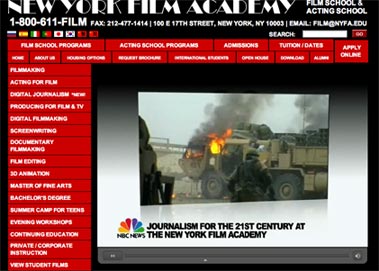We give developers the opportunity to tell us journalists why we should sit up and pay attention to the sites and devices they are working on. Today, live video streamed over the web with extra geographical information mapped in real-time from Seero.

1) Who are you and what’s it all about?
Hello, I’m Justin Cutillo, co-founder of Seero. It’s a geo-broadcasting platform that fuses live and on-demand video with GPS mapping.
Our technology is a response to the convergence and proliferation of video and GPS features in the flourishing mobile device market.
2) Why would this be useful to a journalist?
Seero was built to reflect the core needs of video bloggers and online journalist. The platform incorporates tools for live mobile broadcasting with additional real-time GPS tracking and static location marking.
We also have a geo-information/advertising server. This system allows us to geo-tag specific information to enhance any broadcasts near that location.
For example, if an online journalist was covering a fire in London, we have the ability to upload facts specific to the building and geo-tag them to the exact location. The information is served based on its proximity to the location of the broadcast.
All you need for mobile broadcasting is a laptop and a mobile broadband card. You can add on an inexpensive GPS receiver for the real-time tracking feature or use an Ultra Mobile PC is you don’t want to carry around a full laptop.
3) Is this it, or is there more to come?
We are currently working on some major build items. We should be releasing an embeddable flash player that includes the live video player and the full map functionality within a month. We are also working on a module to add course tracking to previously recorded videos.
Our largest project is to build a mobile broadcasting application for Symbian mobile phones to enable journalist to broadcast live video and GPS right from their Nokia phones.
Beyond that we have a secretive project that could really redefine how people interact with live video on the internet.
4) Why are you doing this?
When it comes down to it we are technology buffs. We came up with the idea on a vacation to San Francisco more than two years ago while thinking of ways to virtually tour a city.
Combining live video and location info opens up new, exciting uses for online video. Needless to say we are very enthusiastic about the prospects.
5) What does it cost to use it?
Besides the hardware cost, which may be very little if you already have a laptop, the service is completely free to all users.
6) How will you make it pay?
We currently envision three main channels of revenue. The first channel involves white label sites built on the Seero infrastructure for promotional as well as professional and government services.
The second channel is geo-advertising. We have a proprietary geo-advertising system that provides a simple and powerful solution for correlating advertising to site content.
Beyond those revenue streams we also see potential for our geo-advertising system as a stand-alone service.





